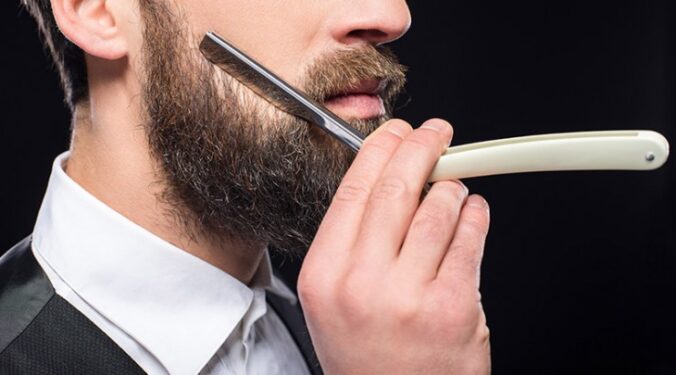Table Of Content

And there’s a longer-term option to consider, especially if you have a lot of unwanted hair that tends to grow back very quickly. Longsworth suggests avoiding shaving this area right before you head to the beach, a pool, or any situation where a lot of sweating is involved. She recommends shaving at night and avoiding deodorant after the fact to give the skin a chance to repair overnight.
The Legs
It’s also important to avoid making multiple passes in the same area over and over, and to rinse your razor between washes. This will help clean the hairs and dead skin cells caught in the blades, giving you a smoother, closer shave. The growth phase for eyelashes, eyebrows, nasal hair, and ear hair is (thankfully) quite short—about a quarter of an inch per month, says Longsworth. They found growth to be about 0.03 millimeters per day or an average of .9 millimeters per month. For reference, that translates to a growth rate of less than 1/25th of an inch per month. Many people think that shaving your legs or underarms causes thicker hair growth.

Can Japanese people handle Bangladeshi spices? Halal Hub thinks so
You can use a light exfoliating shower gel, a loofah, or even a washcloth. There are a lot of options available for facial or body hair removal, but shaving is considered the most convenient, cheap, easiest, and painless method to get rid of unwanted hair. When you shave it, you’re cutting the hair with a razor. The fine, tapered tip is gone, and what’s left is its wider base. But, in reality, its thickness is exactly the same as it was before. Shaving your groin area requires special care to stop the growth of ingrown hairs, irritation, and cuts.
Hair removal: How to shave
Longsworth suggests starting at your ankles and working your way up the leg using short, gentle strokes for better control. Take extra precaution when approaching the knee area, as it tends to be drier and more prone to nicks and cuts. Hair on the upper leg tends to be finer than the hair on the lower leg, so shaving direction matters a bit less according to Shays. Because the skin here is tougher, Longsworth says you can try a depilatory cream to dissolve the hair at its root, which will buy you a few weeks before new growth occurs.
They might recommend more permanent options, such as waxing or laser removal, depending on skin type, body part, and more. For best results, shave both with and against the direction of hair growth. Additionally, you should make sure that you’re rinsing the razor with each stroke. Remember that pubic hair tends to be coarser than other body hair and can clog the blades of your razor quickly.
Follow Us
It’s also best to start brushing your hair at the ends and work your way up to the roots to prevent unnecessary tugging. Thinning hair can be caused by many factors, including genes, diet, stress, and illness. Thinning hair isn’t just a problem that men suffer from.
Take a hot shower before shaving—the steam helps open the pores for a close, clean shave with minimal skin irritation, Longsworth explains. Apply minimal pressure to your razor, use short, gentle strokes, and move with the grain. For those with less sensitive skin, Longsworth says you can re-lather the face with some extra shaving cream or gel and finish by gently shaving against the grain. This, she says, will give you the closest possible shave without suffering any nicks or cuts. For those with more sensitive skin, we suggest skipping that final pass.
Debunking the Myth
This thicker part of a hair follicle's shaft is the first to emerge from shaved skin, giving the appearance and feel of thicker-growing hair. Yet this thick base naturally wears down into a thinner tip over time as the hair continues to grow. Shaving the groin area also takes special care to prevent ingrown hairs, cuts, and other signs of irritation. It’s best to use a new razor each time you shave this part of your body. You may also find yourself noticing hairs more if you’re on the lookout for them. No, shaving does not affect the rate at which hair grows.
“Shaving only gives the appearance of thicker hair,” Dr. Miller explains. As this thinner end is shaved off, the thicker base is left behind, making it look thicker.” Shaving also does not make your hair grow back faster. Whether you shave your legs, facial hair, or both, you’ve no doubt heard that hair grows back thicker and darker after shaving.
Terminal leg hair grows about a half-inch per month, according to Longsworth, with a growth cycle of about two to six months. Vellus leg hairs grow far slower, she adds, though they still follow the same growth cycle as terminal (just at different rates). Vellus hair tends to have a shorter anagen phase than terminal phase. Women have always been told to avoid shaving their faces and body parts because it is a common belief that shaving increases the risk of cuts and infections. It is also presumed to cause redness and pigmentation and makes hair grow back darker and thicker as compared to waxing, threading and other forms of hair removal.
How shaving affects your hair growth, according to a hair scientist - Business Insider
How shaving affects your hair growth, according to a hair scientist.
Posted: Mon, 04 Sep 2017 07:00:00 GMT [source]
So let’s try to put this myth to rest—although, like our hair, it will likely reemerge. Experts explain the root of this myth, why hair looks different after shaving, and how to get a better shave, too. If you want to remove unwanted body hair, whatever removal method you choose will usually have some pros and cons. "Scientists have tried to demonstrate, to test this idea, and some scientists claim that this occurs," he said. "But then they see the hair comes back thicker," he added. "In fact the bottom portion of the hair shaft that's shaved is already thicker."

Shaving simply removes hair that has already grown, allowing new hair to emerge from the follicle as part of the natural growth cycle. Shaving does not make your hair grow back thicker or faster, dermatologists at the Cleveland Clinic, Mayo Clinic, and Healthline all say. This is a myth that has been disproved by strong scientific evidence for many years, according to an article on medical myths published in the British Medical Journal (BMJ). “In general, proper shaving techniques are helpful to prevent razor bumps and irritation,” says Dr. Garshick. “This includes shaving in the direction of hair growth and making sure to always use a clean and sharp razor.” Using a razor with multiple blades can also help you get a closer shave.

No comments:
Post a Comment